Old Navy was cool in the ’90s. Zac Posen has a plan to go back
Remember when Old Navy was cool? Probably not. The last time the clothing brand felt truly relevant was back in the 1990s, when high schoolers flocked to buy baby tees, bucket hats, and cargo pants. Three decades later, Old Navy has become the place where soccer moms shop for the whole family. It creates reliable, inoffensive basics that appeal to a broad swath of America. And while the clothes aren’t particularly exciting, Old Navy sells a lot of them. Last year, it generated $8.2 billion in revenue, making it the biggest brand within the Gap, Inc. portfolio. But Old Navy’s sales have been on the decline over the last five years, as foot traffic to stores has gone down and fast fashion competitors from Zara to Shein have stolen market share. [Photo: Old Navy] Gap, Inc. executives have been scrambling to turn things around. Last August, the board appointed Richard Dickson, Mattel’s former head, to be CEO. One of his first decisions was to bring on a new chief creative officer for Old Navy. He surprised the world by tapping Zac Posen, who is known for the ball gowns he designs for celebrities. Before Posen’s own brand shuttered in 2019, he seemed to have lost his way, dabbling in projects like designing Delta uniforms and David’s Bridal collections. But now, Dickson is entrusting the designer with the enormous task of making Old Navy exciting again. This week, we got a glimpse of Posen’s vision. At New York Fashion Week, he unveiled a limited edition drop that reissues nearly 200 styles from the ’90s, including carpenter jeans, matching tracksuits, rugby shirts, and performance fleeces, all in the loud primary colors that were in style decades ago. They’re available to shop in store and online today. [Photo: Old Navy] ‘90s Style and Quality Zac Posen never expected to work for Old Navy. Before taking this job, he’d been interviewing for positions at French luxury houses, which aligned better with his decades-long career designing red carpet looks. But when he sat down with Richard Dixon to discuss the role, he was drawn to Old Navy’s long cultural footprint. Old Navy was founded in 1994, which makes it a heritage brand in the American retail landscape. “It’s a beloved American brand with real depth,” he says. To kickstart the creative process, Posen asked his creative team to go back into the archives. They turned to Depop and Ebay, where Old Navy pieces from the ’90s are trending thanks to Gen Zers who gravitate towards the wide leg styles of the time, like cargo and carpenter pants, along with baby tees, right out of Clueless. Bucket hats—a la Kangol—were also popular. Posen was impressed by how stylish these early garments were. Back then, the pieces made a bold statement, which tapped into the fashion sensibilities of young people. Going forward, Posen wants to move away from blandness and have a point of view. This ’90s throwback is one example of that. ”We’re not trend chasers, but because of our scale, we can play a role in being trend leaders,” he says. [Photo: Old Navy] In going back to the archive, Posen was also impressed by how well made Old Navy clothes used to be. In the past, the brand opted for thicker, more robust materials like cotton and wool, over polyester and tapped a network of high quality factories in Asia and South America. Over the last three decades, the quality of clothing across the entire fashion landscape has gone down as brands have tried to compete with fast fashion, which uses inexpensive materials to make clothes as cheaply as possible. But these vintage Old Navy clothes felt luxurious. “The weight of the t-shirts felt like t-shirts from The Row,” he says. “The jeans were heavy, but had the softness and wash of Loro Piana. It was so clear that the make of the materials and washes in the apparel industry have evolved.” Posen had the idea of reissuing some of these early pieces, and he wanted to replicate not only their aesthetic, but their quality, too. T-shirts of the past, for instance, were heavier because they were made of higher gauge cotton; today’s t-shirts might be made of thinner cotton, sometimes blended with low-cost synthetic fibers like polyester. Noah Palmer, Old Navy’s GM of global men’s merchandising, explains that Gap, Inc leveraged its long-term relationships with its suppliers around the world. “We sent these vintage pieces to mills, and asked them to replicate them,” Palmer says. “Many of these materials aren’t commonly produced anymore, so we had to make them from scratch.” [Photo: Old Navy] The Future of Old Navy Posen is very clear eyed about the challenges ahead for Old Navy. The brand must constantly reinvent itself to stay relevant, but it also cannot alienate its core customer, because it must continue to be the financial engine for its parent company. Last year, Gap, Inc. generated $14.9 billion, and Old Navy accounted for $8.2 billion of that. (Gap, the brand, only generated $3.3 billion.) “Y

Remember when Old Navy was cool? Probably not. The last time the clothing brand felt truly relevant was back in the 1990s, when high schoolers flocked to buy baby tees, bucket hats, and cargo pants.
Three decades later, Old Navy has become the place where soccer moms shop for the whole family. It creates reliable, inoffensive basics that appeal to a broad swath of America. And while the clothes aren’t particularly exciting, Old Navy sells a lot of them.
Last year, it generated $8.2 billion in revenue, making it the biggest brand within the Gap, Inc. portfolio. But Old Navy’s sales have been on the decline over the last five years, as foot traffic to stores has gone down and fast fashion competitors from Zara to Shein have stolen market share.
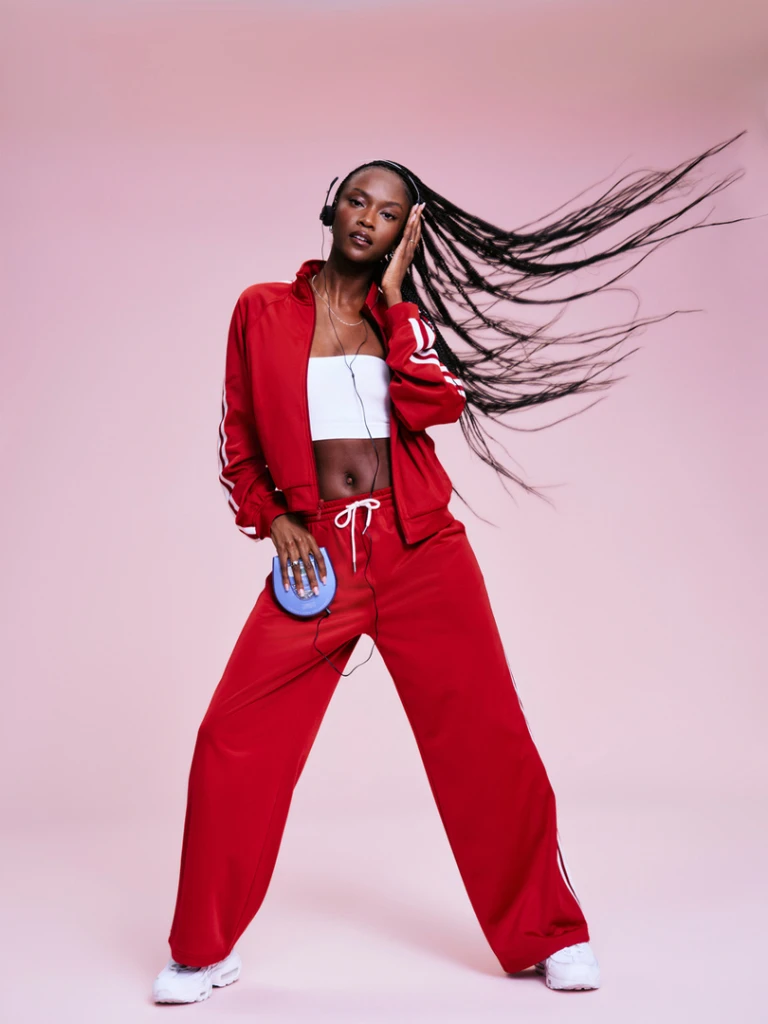
Gap, Inc. executives have been scrambling to turn things around. Last August, the board appointed Richard Dickson, Mattel’s former head, to be CEO. One of his first decisions was to bring on a new chief creative officer for Old Navy. He surprised the world by tapping Zac Posen, who is known for the ball gowns he designs for celebrities. Before Posen’s own brand shuttered in 2019, he seemed to have lost his way, dabbling in projects like designing Delta uniforms and David’s Bridal collections. But now, Dickson is entrusting the designer with the enormous task of making Old Navy exciting again.
This week, we got a glimpse of Posen’s vision. At New York Fashion Week, he unveiled a limited edition drop that reissues nearly 200 styles from the ’90s, including carpenter jeans, matching tracksuits, rugby shirts, and performance fleeces, all in the loud primary colors that were in style decades ago. They’re available to shop in store and online today.
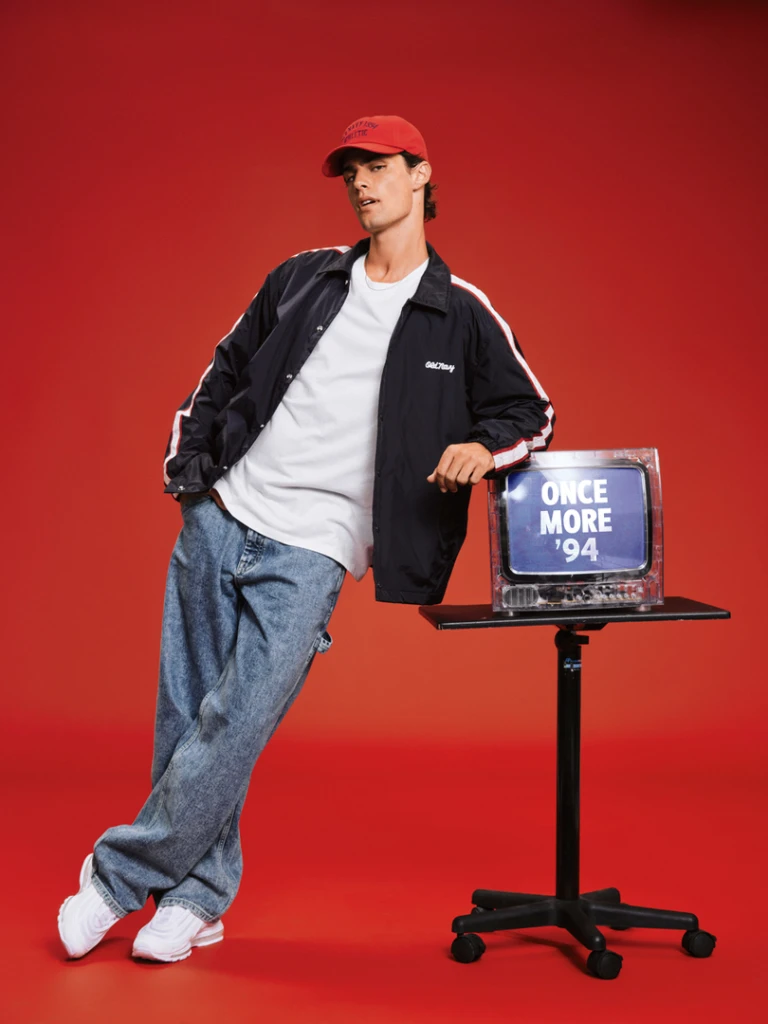
‘90s Style and Quality
Zac Posen never expected to work for Old Navy. Before taking this job, he’d been interviewing for positions at French luxury houses, which aligned better with his decades-long career designing red carpet looks. But when he sat down with Richard Dixon to discuss the role, he was drawn to Old Navy’s long cultural footprint. Old Navy was founded in 1994, which makes it a heritage brand in the American retail landscape. “It’s a beloved American brand with real depth,” he says.
To kickstart the creative process, Posen asked his creative team to go back into the archives. They turned to Depop and Ebay, where Old Navy pieces from the ’90s are trending thanks to Gen Zers who gravitate towards the wide leg styles of the time, like cargo and carpenter pants, along with baby tees, right out of Clueless. Bucket hats—a la Kangol—were also popular.
Posen was impressed by how stylish these early garments were. Back then, the pieces made a bold statement, which tapped into the fashion sensibilities of young people. Going forward, Posen wants to move away from blandness and have a point of view. This ’90s throwback is one example of that. ”We’re not trend chasers, but because of our scale, we can play a role in being trend leaders,” he says.
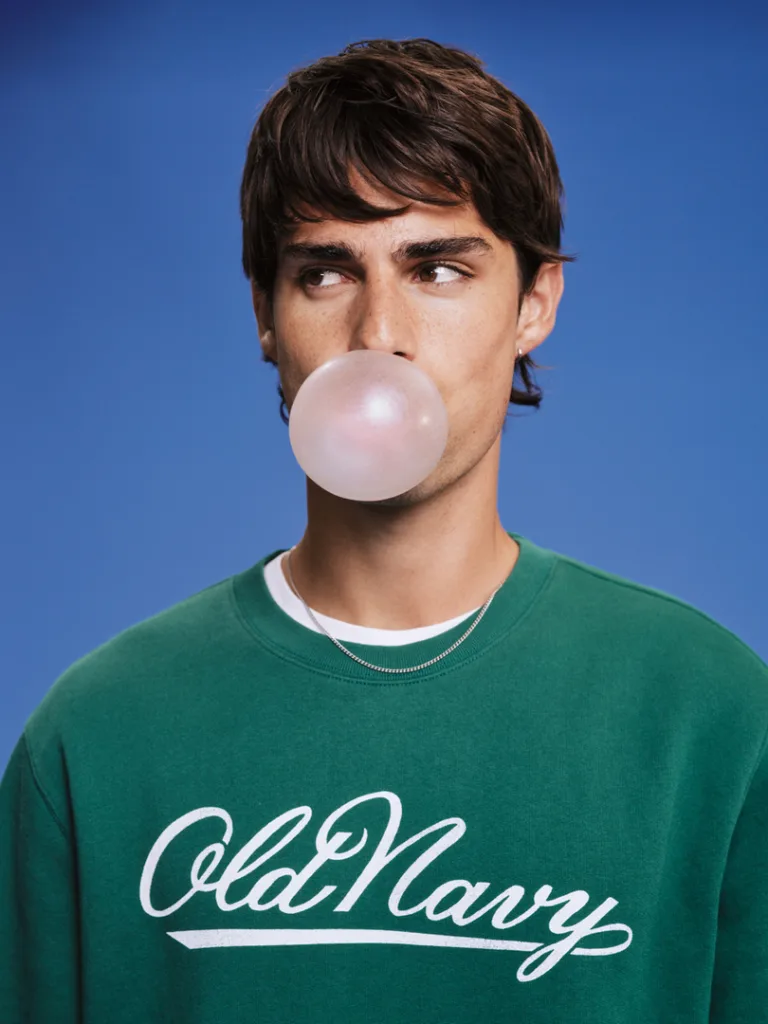
In going back to the archive, Posen was also impressed by how well made Old Navy clothes used to be. In the past, the brand opted for thicker, more robust materials like cotton and wool, over polyester and tapped a network of high quality factories in Asia and South America. Over the last three decades, the quality of clothing across the entire fashion landscape has gone down as brands have tried to compete with fast fashion, which uses inexpensive materials to make clothes as cheaply as possible. But these vintage Old Navy clothes felt luxurious. “The weight of the t-shirts felt like t-shirts from The Row,” he says. “The jeans were heavy, but had the softness and wash of Loro Piana. It was so clear that the make of the materials and washes in the apparel industry have evolved.”
Posen had the idea of reissuing some of these early pieces, and he wanted to replicate not only their aesthetic, but their quality, too. T-shirts of the past, for instance, were heavier because they were made of higher gauge cotton; today’s t-shirts might be made of thinner cotton, sometimes blended with low-cost synthetic fibers like polyester. Noah Palmer, Old Navy’s GM of global men’s merchandising, explains that Gap, Inc leveraged its long-term relationships with its suppliers around the world. “We sent these vintage pieces to mills, and asked them to replicate them,” Palmer says. “Many of these materials aren’t commonly produced anymore, so we had to make them from scratch.”
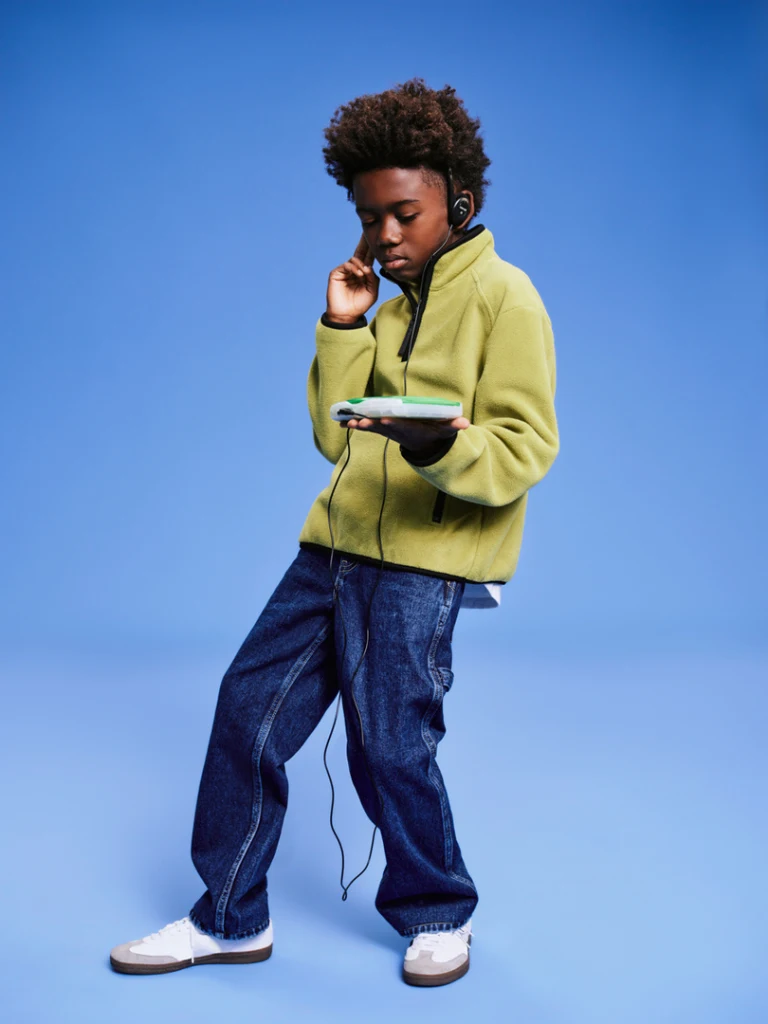
The Future of Old Navy
Posen is very clear eyed about the challenges ahead for Old Navy. The brand must constantly reinvent itself to stay relevant, but it also cannot alienate its core customer, because it must continue to be the financial engine for its parent company. Last year, Gap, Inc. generated $14.9 billion, and Old Navy accounted for $8.2 billion of that. (Gap, the brand, only generated $3.3 billion.)
“You have to celebrate your heritage, while also creating new history and reasserting yourself in culture,” Posen says. “But it’s not enough to be relevant; you need to be drawing in revenue. It’s a delicate balance.”
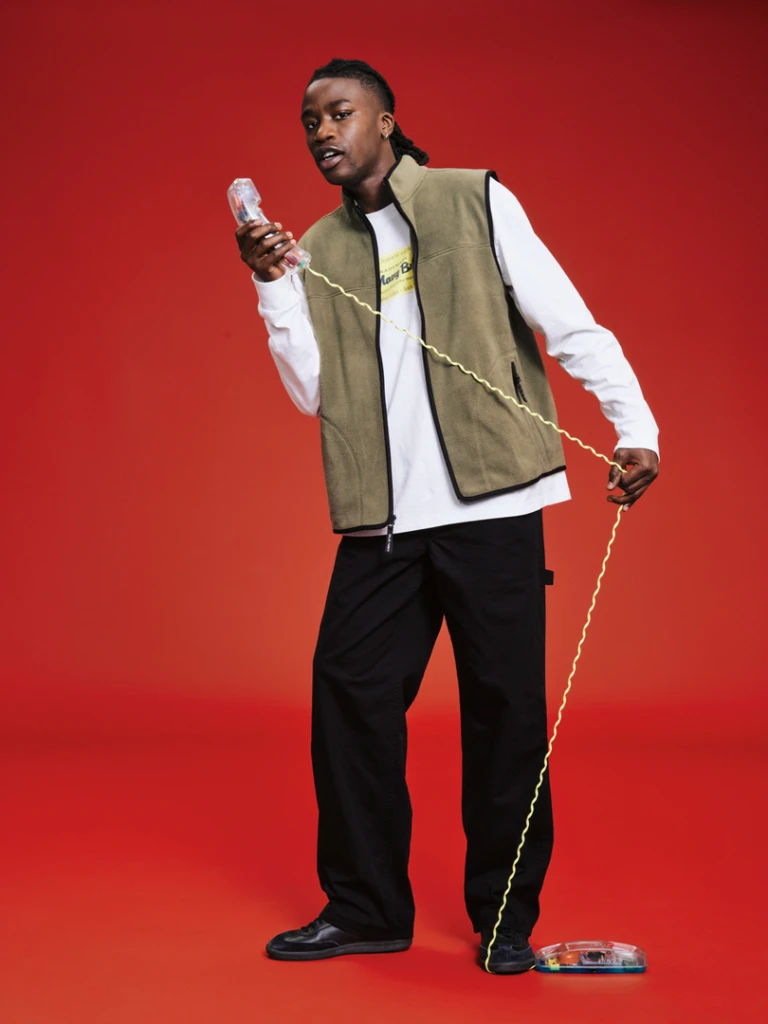
Palmer believes that one path to success is winning consumers away from fast fashion, which dominates the industry. Old Navy is known for its affordable prices, which can allow it to compete with players like Zara and H&M (though probably not with Shein and Temu, which have driven prices and quality to new lows). By having more durable, better quality garments, Old Navy can offer better value.
And while fast fashion creates trendy pieces that can only be worn a few times before going out of style, Old Navy wants to create stylish pieces that can be worn for years. “One of the hallmarks of fast fashion is that you wear it once or twice, then you throw it away,” he says. “That’s not our goal at Old Navy. We want to create super versatile clothing you can wear for lots of occasions and that will hold up for a long time.”
It’s a tall order to win over a new generation of consumers while retaining existing customers. But Posen is optimistic that this is possible. And ultimately, he believes that his role at Old Navy goes beyond creating stylish garments. It’s about shaping consumers’ perception about what Old Navy stands for in culture. “Our purpose is something quite unpretentious, which is to invite everyone to play with style,” Posen says. “We’re not just selling clothes, we’re selling joy.”






















